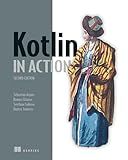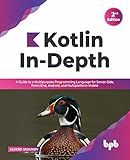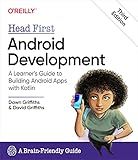Best Kotlin Programming Books to Buy in December 2025

Kotlin in Action, Second Edition



How to Build Android Applications with Kotlin: A hands-on guide to developing, testing, and publishing production-grade Android 16 apps



Kotlin In-Depth: A Guide to a Multipurpose Programming Language for Server-Side, Front-End, Android, and Multiplatform Mobile (English Edition)



Head First Android Development: A Learner's Guide to Building Android Apps with Kotlin



Kotlin from Scratch: A Project-Based Introduction for the Intrepid Programmer



Head First Kotlin: A Brain-Friendly Guide


In Kotlin, getters can be defined for properties using the val and var keywords when declaring a class. Getters are automatically generated for val properties, while custom getters can be defined for var properties using the get() syntax.
To define a custom getter for a var property, you can use the following syntax:
var propertyName: Type get() { // Custom getter logic return field }
In the above example, propertyName is the name of the property, Type is the data type of the property, and the get() function is used to define the custom getter logic. The field keyword refers to the backing field for the property.
You can also define getters for properties directly within the class body without specifying a field:
val propertyName: Type get() = someValue
In this case, the getter simply returns a constant value (someValue) for the property.
Getters can also be defined for properties in interfaces, abstract classes, and regular classes in Kotlin, providing a way to access the values of properties in a controlled manner.
What is the best practice for using getters with mutable properties in Kotlin?
The best practice for using getters with mutable properties in Kotlin is to use custom getters and setters to control access to the property.
Here is an example of how to use custom getters and setters with a mutable property:
class Person { var name: String = "John" set(value) { field = value.capitalize() // capitalize the name before setting it } }
In this example, the name property is mutable, but the custom setter ensures that the name is capitalized before being set. This allows you to control how the property is accessed and modified, while still allowing it to be mutable.
Using custom getters and setters with mutable properties allows you to enforce data validation or manipulation logic, ensuring that your properties are always in a consistent state. It also makes your code more readable and maintainable, as other developers can easily see how the property is being accessed and modified.
What is the significance of using getters in object-oriented programming?
Getters are important in object-oriented programming because they provide a way to access the values of an object's attributes without directly accessing the internal data of the object. This helps to enforce encapsulation and data hiding, as it allows for the object's internal state to be protected from outside interference. Getters also allow for the implementation of validation and manipulation of the data being accessed, promoting data integrity and consistency within the object. Additionally, using getters improves code readability and maintainability by providing a clear and standardized way to access object data.
How to use getters to retrieve values in Kotlin?
In Kotlin, you can use getters to retrieve values from a property by defining a custom getter function for that property. Here's an example:
class Person { var name: String = "" get() { return field.toUpperCase() } }
fun main() { val person = Person() person.name = "Alice"
println(person.name) // Output: ALICE
}
In this example, we have a Person class with a name property. By adding a custom getter function using the get() keyword, we can manipulate the value of the name property before it is returned. In this case, we convert the name to uppercase before returning it.
How to define a getter in Kotlin?
In Kotlin, you can define a getter for a property using the following syntax:
val propertyName: Type get() = // implementation for the getter
Here's an example of how to define a getter for a property:
class Person { var age: Int = 0 get() { return field + 10 } }
In this example, the age property has a custom getter that adds 10 to the actual age value before returning it. The field keyword refers to the backing field of the property, which stores its value.
What is the syntax for defining a getter in Kotlin?
To define a getter in Kotlin, you can use the following syntax within a class:
var : get() =
For example, if you have a Person class with a property name that you want to have a custom getter for, you can define it like this:
class Person(val firstName: String, val lastName: String) { val name: String get() = "$firstName $lastName" }
In this example, the name property has a custom getter that returns the full name of the person by combining the firstName and lastName.
